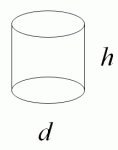Geometrical Product Specifications, abbreviated GPS:
- define the shape (geometry), dimensions and surface characteristics of a workpiece,
- for instance, on an engineering drawing,
- intended to ensure optimum functioning of each workpiece.
Lecture*: Geometrical measurement techniques in products & manufacturing – Introduction
Lecture*: Processes of production & measurement
Manufacturing will produce workpieces which are not perfect with some dispersion in geometrical characteristics about the optimum and from one another.
The geometrical characteristics of these workpieces will be measured in order to compare them with specification.
The concept of GPS is applicable at several steps in the development of a product: design, manufacturing, metrology, quality assurance, conformity assessment, delivery, installation, use and final disposal.
(Product) Specification process
The specification process is to “translate the design intent into requirement(s) for specific GPS characteristics” according to ISO/TS 17450-2.
Note that this means specification of the quality characteristics of the entity subject to conformity assessment. (It should not be confused with a specification of the measurement/verification process.)
Typically, the requirement(s) for specific GPS characteristics will be expressed at this stage as maximum permissible errors which set an acceptable limit on how far each GPS characteristic is permitted to deviate from nominal without leading to detrimental product quality.
Example: “Compliance uncertainty of diameter characteristic in the next-generation geometrical product specifications and verifications”, Lu et al. 2008
Lecture*: Product & Production Communication
Lecture*: Measurement preparation – measurement errors before manufacturing of geometrical products
The main aim of conformity assessment is to determine actual errors in the characteristics of workpieces/features, such as might arise during manufacture or in subsequent wear and tear. Where these are determined, one is not referring to uncertainties but known errors. Hopefully, measurement uncertainties – that is, apparent errors arising from limited measurement quality – are relatively small and since they have a completely different nature, they should not be combined with the specification errors!
- ISO/TR 14638: 1995 Geometrical product specification (GPS) – Masterplan
- ISO/TS 17450-2:2005 Geometrical product specifications (GPS) – General concepts – Part 2: Basic tenets, specifications, operators and uncertainties
